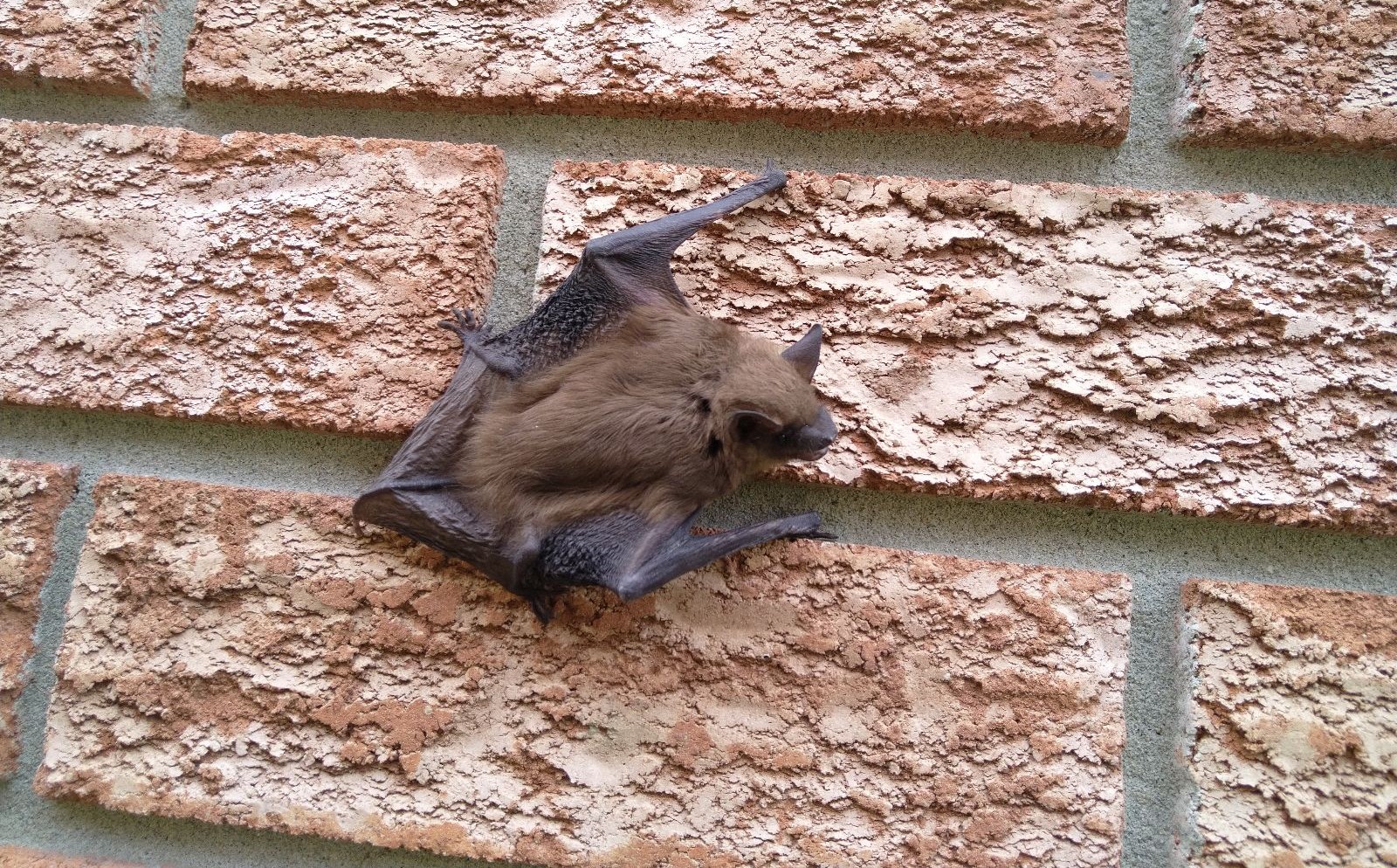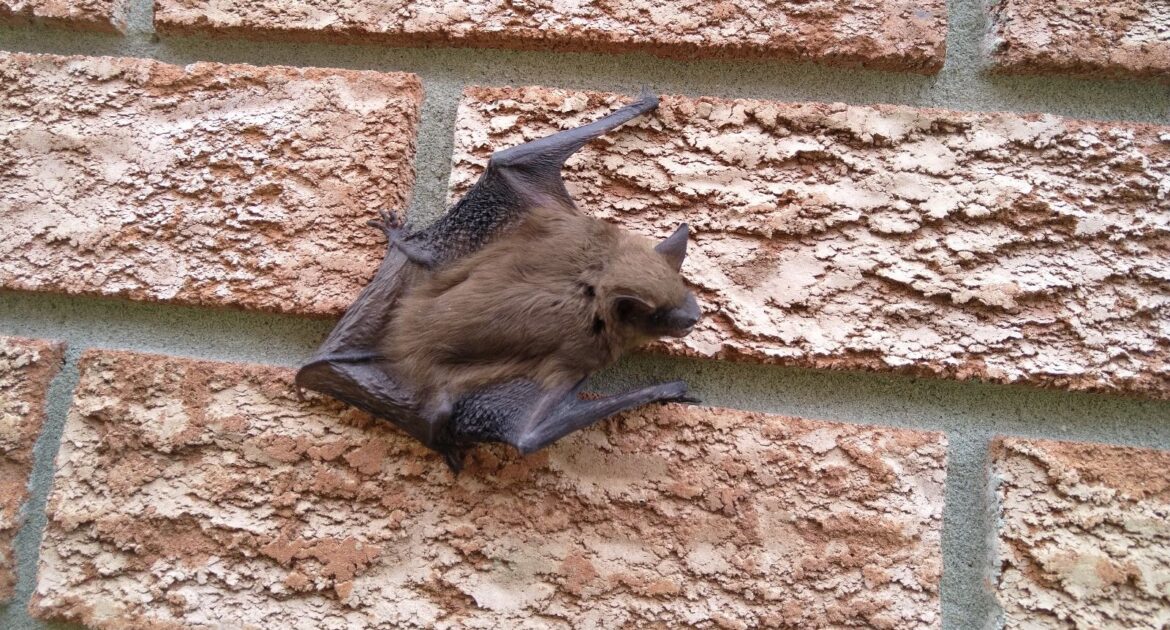Bats are often misunderstood creatures, shrouded in mystery and misconceptions. Yet these remarkable mammals play crucial roles in our ecosystems through their diverse feeding habits. So, what do bats eat? The answer depends on the species, but most of the bats found in Montreal are insectivores, meaning their primary diet consists of mosquitoes, moths, beetles, and other flying insects.
A single bat can consume thousands of insects in just one night, making them natural pest controllers. In other parts of the world, certain species also eat fruit, nectar, small vertebrates, and even fish.
Understanding bat diets is key to appreciating their value in nature and recognizing why they’re often found near homes and gardens where insects are abundant. These creatures are active at night, and their bat feeding habits are finely tuned to their surroundings—they use echolocation to hunt in the dark, zeroing in on their prey with remarkable precision.
At Skedaddle Humane Wildlife Control, we’ve encountered countless bat colonies in homes and attics, giving us first-hand insight into their behaviours and what draws them to certain areas. In this blog, we’ll explore the fascinating variety in bat diets and why their feeding choices matter for homeowners and the broader environment.
The Surprising Diversity of Bat Diets
When most people think about what bats eat, they picture insects being snatched from the air. While this is accurate for many species, feeding habits are remarkably diverse across different types and regions.
Insectivorous Bats: Nature’s Pest Controllers
The majority of bats in Montreal and throughout Canada are insectivorous, meaning they feed primarily on insects. These mammals are incredibly efficient hunters that use echolocation to locate and capture their prey with remarkable precision.
- A single little brown bat (one of the most common species in Montreal) can consume up to 1,000 mosquito-sized insects in just one hour.
- During peak feeding times, bats can eat up to three times their body weight in insects every night.
- Common prey includes mosquitoes, moths, beetles, flies, and other flying insects that many consider pests.
This insect-consuming capacity makes these creatures natural pest controllers. For residents dealing with mosquitoes during summer evenings, local bat populations provide free and environmentally friendly pest management services.
Fruit-Eating Bats: Forest Gardeners
While not common in Montreal, fruit bats (also known as flying foxes) play essential ecological roles in tropical and subtropical regions. They are recognized for their pivotal contributions to the ecosystem.
- Seed Dispersal: When fruit bats consume fruits, they often carry seeds far from the parent plants before dropping them in their droppings, helping to regenerate forests.
- Pollination Services: Many fruit bats drink nectar and, in the process, transfer pollen between plants, supporting plant reproduction and genetic diversity.
Though we don’t encounter fruit bats in our wildlife control work, understanding their ecological contributions helps paint a complete picture of bat diets globally.
Specialized Feeders: From Nectar to Fish
Some bat species have evolved highly specialized feeding strategies.
- Nectar-feeding bats have long snouts and tongues to reach deep into flowers, where they drink nectar and collect pollen.
- Fishing bats use their large feet and sharp claws to skim the water’s surface and catch small fish.
- Carnivorous bats feed on small vertebrates like frogs, lizards, birds, and even other bats.
While these specialized feeders are rare in Quebec, they demonstrate the remarkable dietary adaptations these animals have developed throughout evolution.
Seasonal Changes in Bat Feeding Patterns
What bats eat often changes with the seasons, especially in regions like Montreal with distinct seasonal variations.
Spring and Summer Feeding Frenzies
During warmer months, insect populations explode, providing abundant food sources for local species. This timing aligns with increased energy demands.
- Females nursing pups require additional calories to produce milk.
- Growing juvenile bats need extra nutrition to develop properly.
- All bats must build fat reserves for the upcoming winter.
This is when feeding activity reaches its peak, with most colonies emerging each evening for extended hunting sessions. During summer months, colonies in residential structures become more noticeable as they frequently exit and return to feed.
Fall Transition and Winter Survival
As temperatures drop in autumn, insect populations decline, forcing bats to adjust their feeding strategies.
- Increased feeding intensity – Bats hunt more aggressively during available opportunities.
- Dietary shifts – They may focus on whatever insects remain abundant.
- Fat storage – Critical reserves are accumulated before hibernation.
During winter, most Quebec species hibernate, entering a state of torpor where their metabolism slows dramatically. While hibernating, bats survive on fat reserves rather than active feeding, which is why the pre-hibernation feeding period is so critical to their survival.
Ecological Benefits of Bat Feeding Habits
The diverse diets explored translate into significant benefits for both natural ecosystems and human communities.
Natural Insect Control
The insect-consuming capacity of bats provides a valuable ecological service. A colony of 100 bats can consume over a million insects each night. This natural pest control helps regulate insect populations without pesticides. Agricultural areas benefit from reduced crop damage by insect pests.
Research Insight: Studies estimate that bats save North American farmers billions of dollars annually in avoided pesticide costs and reduced crop damage.
Supporting Biodiversity
Feeding activities contribute to biodiversity in several ways.
- Ecosystem Balance: By controlling insect populations, bats prevent any single species from dominating the ecosystem.
- Plant Propagation: Though less common in Montreal, the seed dispersal and pollination services provided by fruit and nectar bats globally help maintain plant diversity.
- Food Web Support: Bats serve as prey for other animals, including owls and hawks, forming an important link in the food chain.
Urban Ecology Benefits
Even in urban environments, bat feeding habits provide valuable services:
- Reduction in mosquitoes and other biting insects that can carry diseases.
- Natural control of moths and beetles that might damage garden plants.
- Lower need for chemical pesticides in urban green spaces.
What Bat Diets Tell Us About Their Behaviour
Understanding what bats eat provides important clues about their behaviour and habitat preferences, helping us better manage human-bat interactions.
Foraging Patterns and Roosting Sites
Feeding habits influence where bats choose to roost. Insectivorous bats often select roosting sites near water bodies, where insects are abundant. Colonies frequently establish in structures that provide easy access to feeding grounds. Exit and return patterns from roosts typically align with peak insect activity periods.
At Skedaddle, we’ve observed that homes near water features often experience more activity precisely because of these feeding preferences.
Recognizing Bat Feeding Activity
Homeowners can identify potential bat presence by looking for these feeding-related signs. Dusk Activity: Increased movement around your property at sunset suggests they’re emerging to feed. Insect Reduction: Noticeably fewer mosquitoes and flying insects in your immediate area compared to nearby locations.
Return Patterns: Bats returning to the same entry points of your home before dawn after nighttime feeding.
When Bat Feeding Habits Become a Homeowner Concern
While diets benefit the environment, they can create challenges when colonies establish in residential structures.
From Beneficial to Problematic
Bats roosting in your attic or walls bring their feeding activities—and associated issues—close to home. Guano accumulation from well-fed colonies can create odour and health concerns. Entry and exit points used for nightly feeding runs can damage building materials over time. Noise from colony movement during peak feeding times can disturb residents.
Health and Safety Considerations
Colonies that establish in homes require professional attention because of several risks.
- Droppings accumulation – Guano can harbour the fungus that causes histoplasmosis, a respiratory disease.
- Potential contact – Though rare, bats can occasionally carry rabies.
- Structural impacts – Long-term roosting and feeding patterns can damage insulation and building materials.
Professional Bat Management: The Skedaddle Approach
At Skedaddle Humane Wildlife Control, we understand the importance of bats in our ecosystem while recognizing the challenges they may pose to homeowners. Our approach involves humane removal methods, ensuring that bat colonies are safely extracted from residential structures without harm to them or your home. If you notice signs of bats living on your property, it’s crucial to handle the situation responsibly and effectively. Contacting us at Skedaddle will ensure professional and ethical management solutions, safeguarding both your home and our vital ecological allies—the bats.
Ensure peace of mind and ecological balance by entrusting Skedaddle with your bat-related concerns today.




